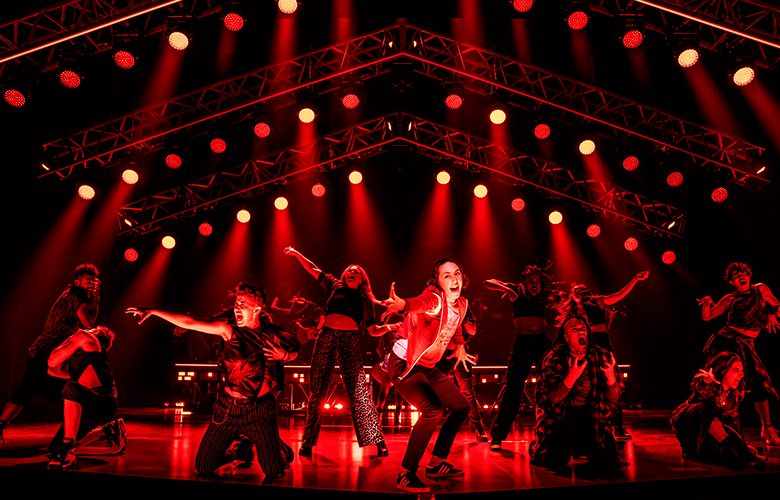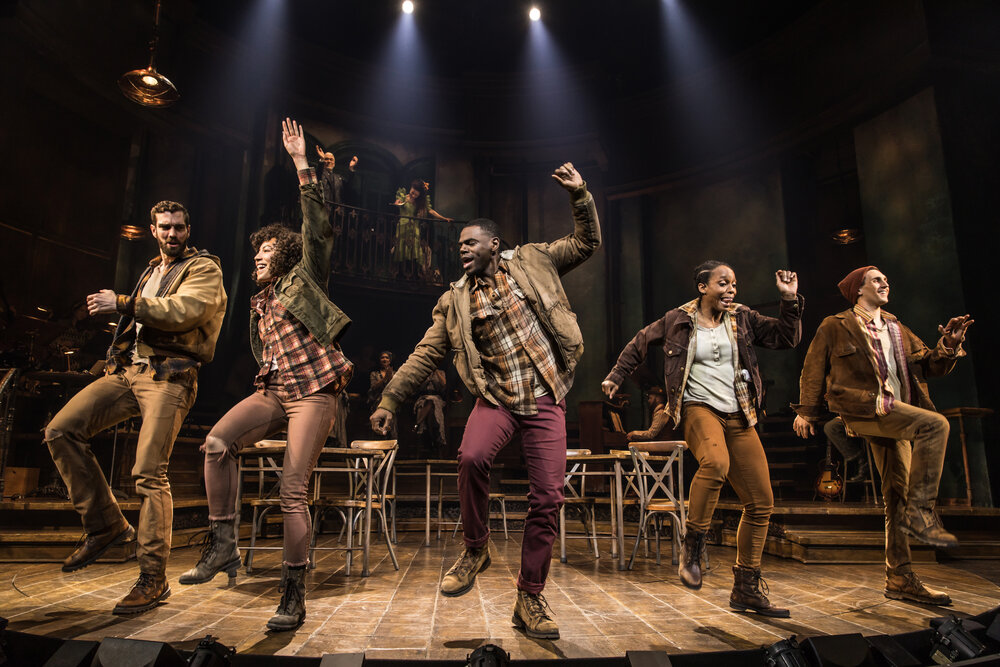
When co-creator Nikka Graff Lanzarone and I started our theatre-focused podcast in 2013, we spent a lot of energy thinking about what to call it. We wanted a name that focused on the artists who play supporting roles in musical theatre, celebrating both their creativity and their skill sets. We settled on the title “The Ensemblist,” modifying the word “ensemble” into something more technical but undeniably theatrical.
In practice, I had always used the term “chorus” to describe a unified group communicating a unified perspective. Alternatively, the term “ensemble” described a group of individuals working together. There’s a subtle difference between the two: “ensembles” showcasing the difference between the individuals while “choruses” working to make them indistinguishable.
Merriam-Webster defines a “chorus” as an organized company of singers or dancers supporting the featured players. While the term has its origins in Athenian plays, it continued to be employed to describe groups of background performers from Elizabethian dramas to early 20th Century musical comedies. Conversely, the definition for “ensemble” is a group producing a single effect. The difference is subtle but important, as this word emphasizes the individuals as well as the consequences of their unification.
For the first half of the 20th Century, the chorus was often split between two separate groups: one of singers and another of dancers. More recently, the fashion has been to refer to these supporting players as an ensemble; in part because the singers and dancers are unified into one group, but also because they are also asked to play minor characters, tumble, roller skate and move the sets.
Somehow, naming these groups of performers “ensembles” has seemed more respectful. By celebrating the different energies and perspectives these supporting actors create, we are giving their work more credence and value. Even while Actors’ Equity Association continues to refer to supporting players as Chorus members, the word has fallen out of fashion with most playwrights. From Mean Girls to Beetlejuice, those actors who are not playing principal roles are only known as one thing: the ensemble.
Why is this happening? It’s not because theatremakers have reverted to dismissing supporting players to nameless, faceless roles. On the contrary: these are two of the most prominent ensembles on Broadway today. No audience member walks out of the Walter Kerr Theatre without remembering the five workers who guide us from New Orleans to Hell and back again. Similarly, Jagged Little Pill begins with solos for the show’s chorus welcoming us to “wake up” and enter the world of the Healy family.

The productions of both Jagged Little Pill and Hadestown each feature their ensemble players with standout moments as well. As seen in this year’s Macy’s Thanksgiving Parade, the ensemble members of Hadestown are each featured in moments where the staging is designed to draw the audiences’ eyes to their work. Many of the ensemble players of Jagged Little Pill are also featured as doctors, therapists, teachers and students.
It seems because in addition to their work as featured players, both shows employ this group of actors to step outside their small roles and comment on the story. Similarly to the ensemble of Hamilton, these performers not only play people, but thoughts, energies and ideas. It’s a callback to the choruses of Greek dramas but with a decidedly contemporary twist.
Both Hadestown and Jagged Little Pill seem to call their supporting players a chorus not to diminish them, but to celebrate them. In each show, they define the energy of the production. They are simultaneously both ensembles and choruses, taking the best of both worlds and combining them into a way of storytelling.
Ryan Worsing: I’m Always Proud to Be a Part of a Great Ensemble
5 Reasons A Mentor Can Change Your Performing Career
Published in collaboration with The Ensemblist
Listen to the Ensemblist Podcast
The Ensemblist: Instagram, Facebook, Twitter


THE ENSEMBLIST IS AN ONLINE ADVOCATE FOR THE TALENTED ARTISTS WHO WORK IN BROADWAY ENSEMBLES. What started as an audio podcast for those curious about how Broadway really works turned into an avenue for young and aspiring professional artists to learn more about theatre from in the inside out. In addition to more than 150 podcast episodes, available on Apple podcasts, Stitcher, TuneIn and Podbean, The Ensemblist’s blog features daily posts from artists about their work and lives. The Ensemblist is also active on both Instagram and Twitter, with more than 10,000 followers on each platform. Through our posts, podcasts and features, we are changing the conversation about what it means to be a successful theatre artist.
Read Full Profile© 2021 TheatreArtLife. All rights reserved.

Thank you so much for reading, but you have now reached your free article limit for this month.
Our contributors are currently writing more articles for you to enjoy.
To keep reading, all you have to do is become a subscriber and then you can read unlimited articles anytime.
Your investment will help us continue to ignite connections across the globe in live entertainment and build this community for industry professionals.